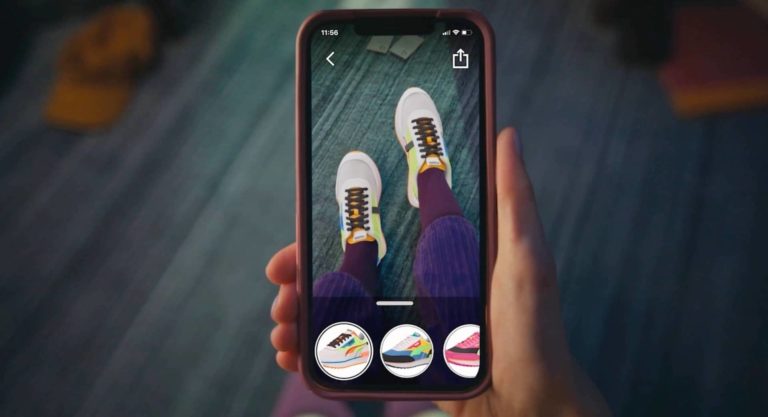
We hear a lot about AR shopping, such as 3D virtual try-ons. Among the common chorus of value propositions, it engenders buyer confidence, such as knowing that the shoe fits or the eyeliner shade is right. That can lead to higher eCommerce conversions and lower return rates.
To be more specific, AR shopping can include 3D product models in zoom & rotate carousels on e-Commerce sites (e.g., Google Swirl). It can also involve AR lenses (e.g., Snapchat), which takes things a step further by activating the camera for real-world scene placement.
On the user end, interest is growing due partly to Gen Z’s growing spending power. As they cycle into the adult consumer population, they bring camera-native tendencies with them. Along with broader cultural adoption, this generational effect could accelerate AR shopping adoption.
But those aren’t the only gating factors. There are also adoption barriers on the merchant end. These have been lowered to some degree by players like Snap which make AR experience creation easier. But that still often leaves a workflow gap: 3D product models themselves.
Democratization Efforts
These 3D models are representations of products that are the centerpiece of virtual try-ons. They need accurate textures, colors, etc. And though any manufactured product has a CAD model floating around somewhere, they have to be compressed and optimized for mobile shopping.
This 3D-model bottleneck is starting to be alleviated by players that streamline and democratize the process. They include VNTANA in 3D model management, optimization, and deployment. On the capture/creation end, there are players like CG Trader that produce 3D product models.
Meanwhile, other democratization efforts continue to progress. For example, Apple’s Object Capture lets developers build 3D model-creation capabilities into their apps to further reduce friction in producing these assets. Among other things, this can empower smaller merchants.
In fact, Shopify continues to lean into this principle. It recently integrated the latest flavors of Object Capture in iOS 17. This lets merchants scan products to create 3D models using an iPhone Pro’s LiDAR scanner as opposed to the advanced photogrammetry equipment usually needed.
One benefit to such merchants, beyond raising their game with AR, is cost. The current standard for product displays in eCommerce is HD photography, which isn’t cheap. In fact, CG Trader has quantified how 3D model creation is cheaper and more versatile than photo shoots.
Is AR Shopping Cheaper to Produce Than Traditional eCommerce?
Common Sequence
Stepping back, though all the above presents opportunities for brands and retailers, there’s still adoption friction. Here, the lesson is the same as with past tech revolutions, such as mobile marketing: develop early competency or be ill-prepared when the tipping point comes.
This will play out through a common sequence. First, early-adopter brands will offer AR shopping. Then consumers will get a taste for it and start to get acclimated. That acclimation then evolves into expectation. And that’s the moment when AR shopping reaches that tipping point.
Brands that haven’t adopted the technology at that point are suddenly behind. And like early days of the smartphone era, this puts laggards at a competitive disadvantage. That’s followed by years of playing catchup… which is costlier than adopting the technology in the first place.
As they say, those who don’t study history are destined to repeat it. Though AR will have its own evolutionary path, its adoption and competitive dynamics will have at least some parallels to past tech cycles and emerging media formats. We’ll see who has the best institutional memory.

